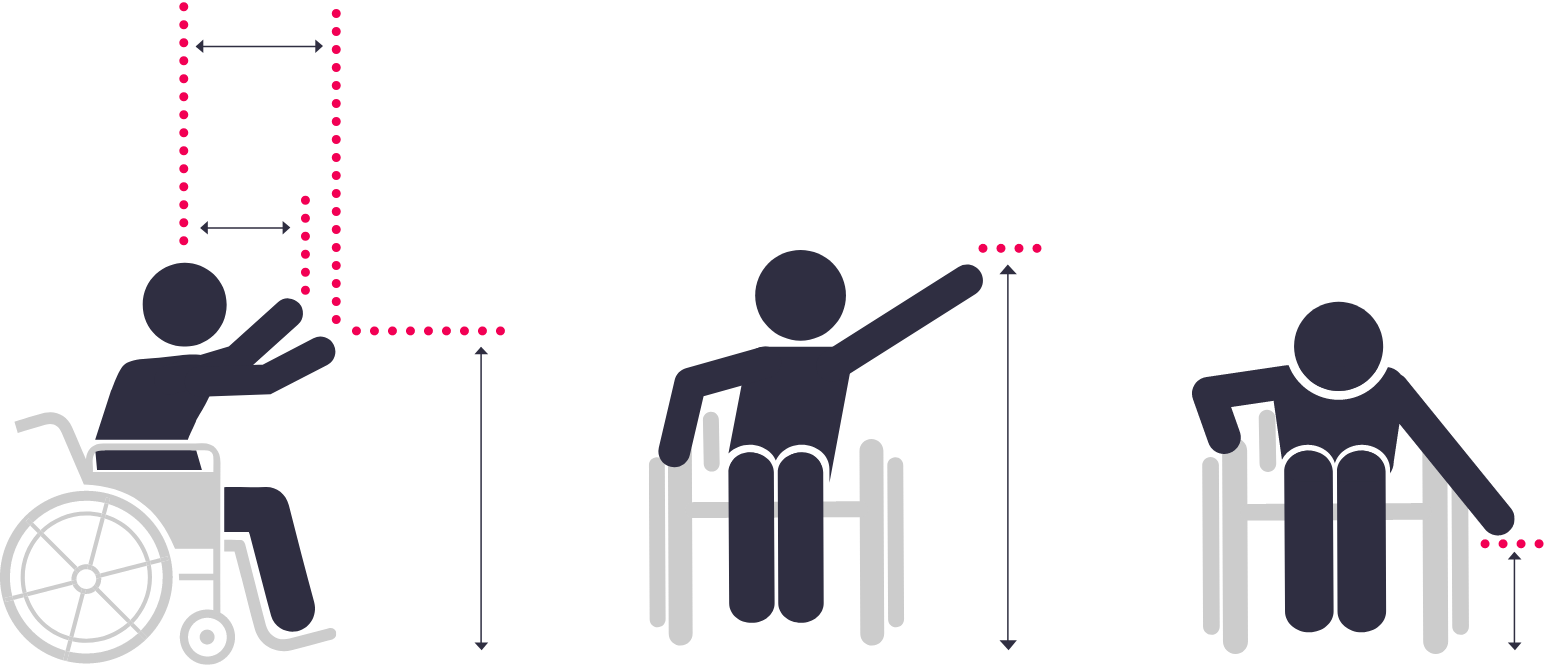2.7.2: Understanding Physical Disabilities in the Workplace
When we think of physical disabilities, what often comes to mind are mobility devices like wheelchairs and walkers. But the reality is that physical disabilities encompass a much wider range of experiences that impact how a person moves, navigates their environment, and performs tasks.
Employers must understand the broad spectrum of physical disabilities, challenge assumptions, and proactively address barriers to create a truly inclusive workplace. This introductory tool will provide that essential knowledge base for your accommodation and accessibility efforts.
Defining Physical Disabilities
Physical disabilities substantially limit one or more basic physical activities, such as walking, climbing stairs, reaching, lifting, or carrying. These limitations may result from various disorders and injuries affecting the neurological, musculoskeletal, respiratory, and cardiovascular systems.Some common examples include:
- Mobility disabilities that impact a person’s ability to walk, climb, or maintain balance, often resulting in the use of canes, crutches, walkers, wheelchairs, or scooters. Conditions like spinal cord injury, cerebral palsy, multiple sclerosis, and amputation can cause mobility disabilities.
- Flexibility disabilities that limit a person’s range of motion and ability to bend, reach, or stretch. Conditions like arthritis, fibromyalgia, and carpal tunnel syndrome often impact flexibility.
- Dexterity disabilities that affect a person’s ability to perform fine motor tasks with their hands, like grasping small objects, writing, or typing. Dexterity disabilities can stem from conditions like Parkinson’s, muscular dystrophy, stroke, and hand injuries.
Workplace Barriers and Impacts
Physical disabilities can impact many aspects of a person’s work, from getting into the building to navigating the space to performing essential tasks.Here are a few examples of common barriers:
- Lack of accessible parking, entrances, elevators and washrooms that make it difficult for employees with mobility disabilities to access the workplace.
- Workstations and meeting rooms that don’t provide adequate clear space for mobility devices to maneuver and turn around.
- Standard office equipment like phones, computers, and copy machines that are difficult to reach and operate for employees with dexterity and flexibility limitations. For most in a seated position, a person’s maximum reach height is 43 inches (1100 mm), and extension is 24 inches (600 mm) for a touch reach or 20 inches (500 mm) for a grasp reach.1
- Shelves, filing cabinets, and storage areas that are too high or require significant strength and dexterity to use. If a person is required to reach above and to the side, items/objects should be at a maximum of 55 inches (1400 mm). If they need to bend forward and to the side to reach below their knee, objects should be at a minimum of 9 inches (230 mm) above the ground.2
- Rigid work schedules and policies that don’t allow flexibility for people whose disabilities cause fatigue, fluctuations in ability, or require frequent breaks.
- Beliefs, attitudes and business practices that devalue employees with disabilities.

While removing physical barriers is an essential starting point, true workplace inclusion goes beyond ramps and grab bars. It’s about examining all aspects of the work environment and experience through an accessibility lens - with the active involvement of employees with disabilities.
Myths vs. Facts
Unfortunately, many harmful myths and stereotypes persist about people with physical disabilities in the workplace. Let’s debunk a few of the most common ones:
Myth:
Employees with physical disabilities are less capable and productive.
Fact:
With suitable accommodations and an enabling environment, employees with physical disabilities can be just as productive and successful as their non-disabled peers. Many people with disabilities have exceptional problem-solving skills, resilience, and adaptability.
Myth:
It’s expensive to accommodate an employee with a physical disability.
Fact:
As mentioned in Toolkit 13.1 Workplace Accommodation Essentials3, most workplace accommodations are free or low-cost, such as flexible work arrangements, ergonomic tools, or rearranging furniture. Where costs are involved, they are almost always outweighed by the benefits of retaining a valued employee.
Myth:
Accommodating physical disabilities in the workplace is a special privilege.
Fact:
Providing reasonable accommodations to enable employees with disabilities to perform their jobs is a legal requirement under the Accessible Canada Act4 and provincial human rights legislation. But beyond compliance, it’s simply good business to ensure all employees can contribute their best work.
The Employer’s Role
Employers have a key role to play in enabling employees with physical disabilities to thrive at work. This starts with educating yourself and your team about the diversity of physical disabilities, as you’re doing with this tool. It also means championing an inclusive culture where employees with disabilities are treated respectfully, and their needs are proactively considered in decision-making.Some tangible ways employers can support employees with physical disabilities include:
- Conducting an accessibility audit of the workplace to identify and remove barriers.
- Developing clear processes for employees to request accommodations and ensuring those needs are met in a timely manner.
- Providing ergonomic assessments and tools to enable employees to work comfortably and safely.
- Offering flexible work options, like remote work, variable start times, and generous medical leave policies.
- Involving employees with disabilities in emergency planning to ensure their safety.
- Regularly seeking feedback from employees with disabilities on how to make the workplace more inclusive.
- Partnering with local disability organizations for ongoing education and support.
Creating an enabling environment for employees with physical disabilities is an ongoing journey, not a one-time task. But by taking intentional action to understand and address accessibility needs, you’ll be well on your way to unlocking the potential of this diverse talent pool.
Hire for Talent has made every effort to use the most respectful words possible while writing these materials. We realize, however, that the most appropriate terminology may change over time. We developed these materials with the intent to respect the dignity and inherent rights of all individual.



